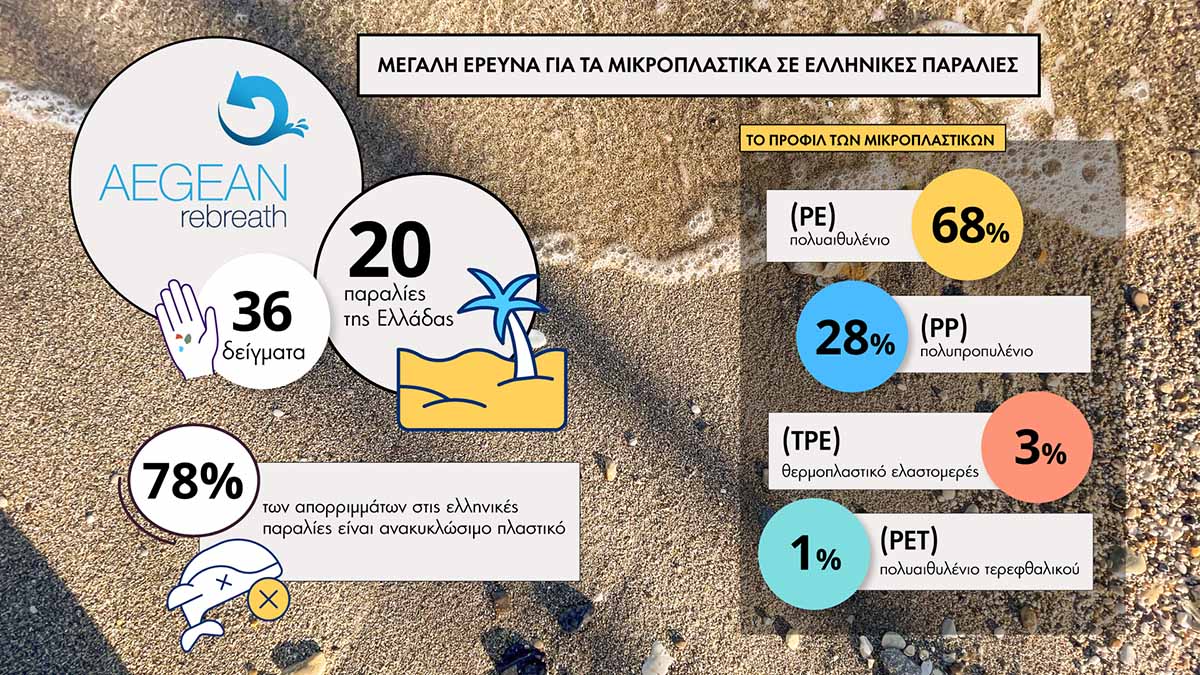Aegean Rebreath, in cooperation with the Hellenic Centre for Marine Research – HCMR, has completed the first large-scale research into the extent to which microplastics are to be found on Greece’s beaches.
Aegean Rebreath volunteers collected sand samples in 20 beaches in Greece (Attica, Anafi, Zakynthos, Corfu, Kefalonia, Santorini, Nisyros, Tinos, Syros, Paros, Chania, Naxos, Methoni, Lefkada, Pelion, Andros, Paros, Kea). The Through the use of specialized equipment, small plastic material was extracted and sent to HCMR’s laboratories where they were quantified in terms of dimensions and examined for composition in order to assist their cataloguing by size and make-up.
All 36 samples from the 20 beaches contained plastics. In total, 3,778 pieces smaller than 2.5cm per square meter were found. Based on these results, the largest type were ‘fragments,’ at about 55% of the total, followed by foams at 28%. At the same time, small (1-5mm) and medium (5-20mm) plastics were found to be arrayed differently between the Aegean and Ionian seas, possibly due to different uses of plastics.
Analysis by HCMR showed polyethylene (PE) as the major type of polymer in microplastics, at 68%. The rest of the polymers were polypropylene (PP) at 28%, thermoplastic elastomers (TPE) at 3% and polyethylene terephthalates (PET) at 1%.

Research shows that between 4.8 – 12.7 million tons of used plastics end up in the sea as garbage every year. Plastic takes a long time to degrade. Its resulting long presence on beaches and in the water, combined with increasing plastics waste has resulted in grave concern by the international scientific community about the dangers this poses to underwater and coastal ecosystems. It has also been proven that microplastic surfaces also attract other toxic pollutants, and in this way spread through our oceans either through wind and currents, or by being ingested by wildlife thereby spreading pollution remarkably farther than its initial location. Even more recently, there has been research linking the introduction of microplastics to our own bodies.
The study of microplastics throughout marine ecosystems has mobilized significant global interest from the scientific community due to their concerning biological and environmental negative consequences. Similarly, there is increasing interest in Greece- a country with Europe’s longest coastline. This study is an important milestone offering tangible results and data to the research community while, at the same time, assisting towards setting priorities for future work. Its analysis and findings will be shared with the Hellenic Ministry of the Environment and Energy.
Moving ahead, continued collection of samples from beach environments will allow for a more detailed, more significant analysis as well as trend mapping on the very serious issue of microplastics on Greek beaches.



